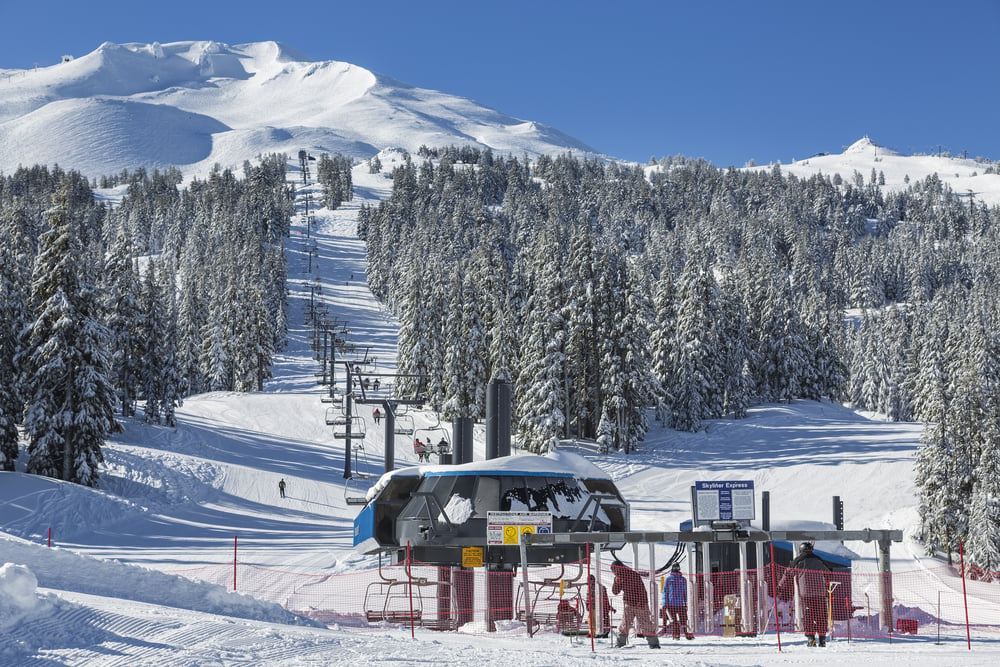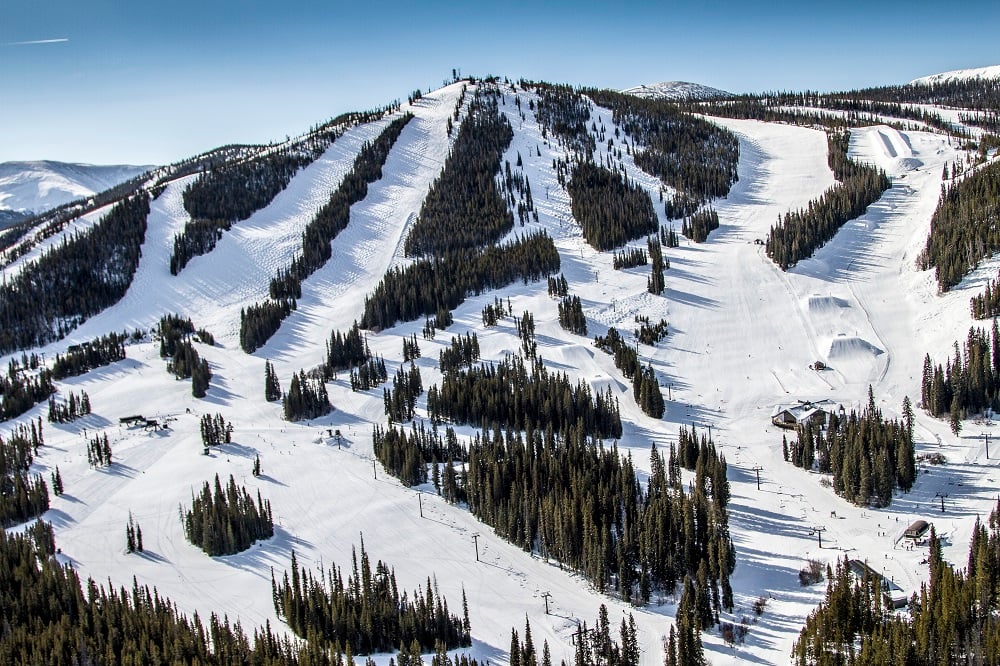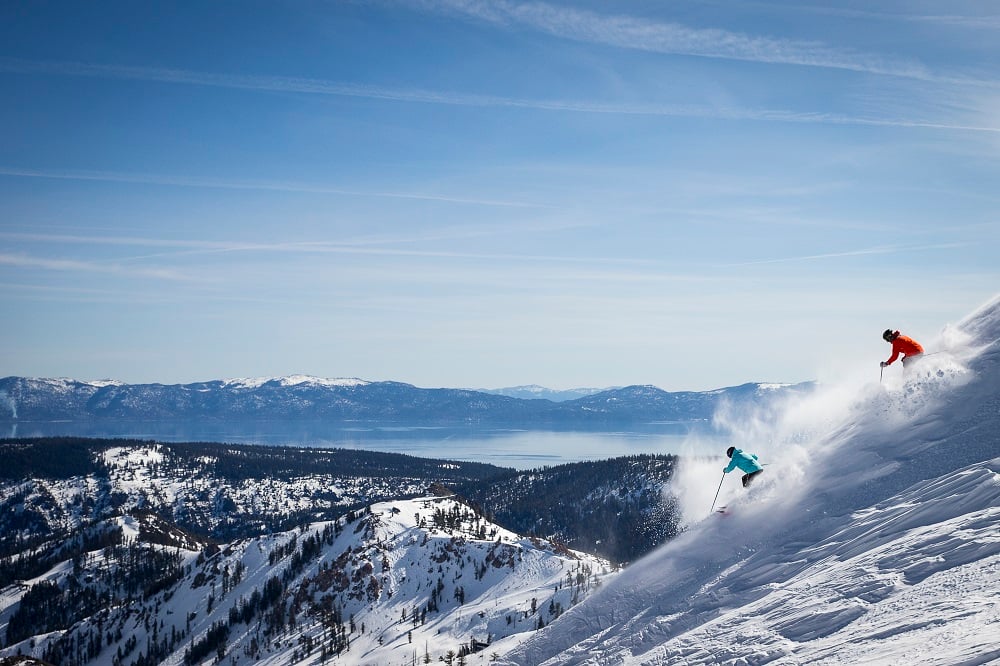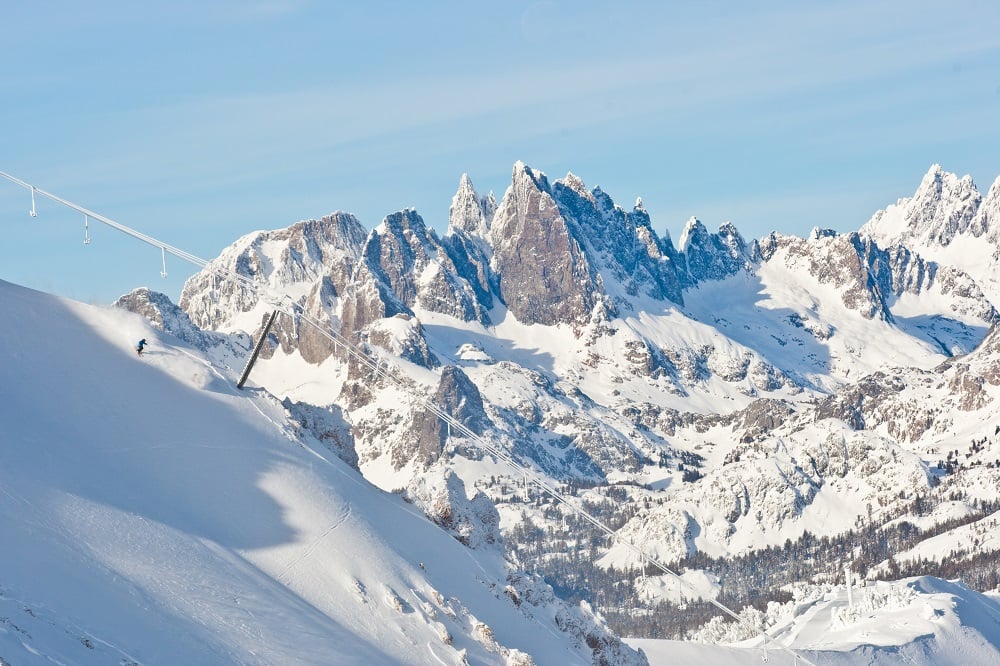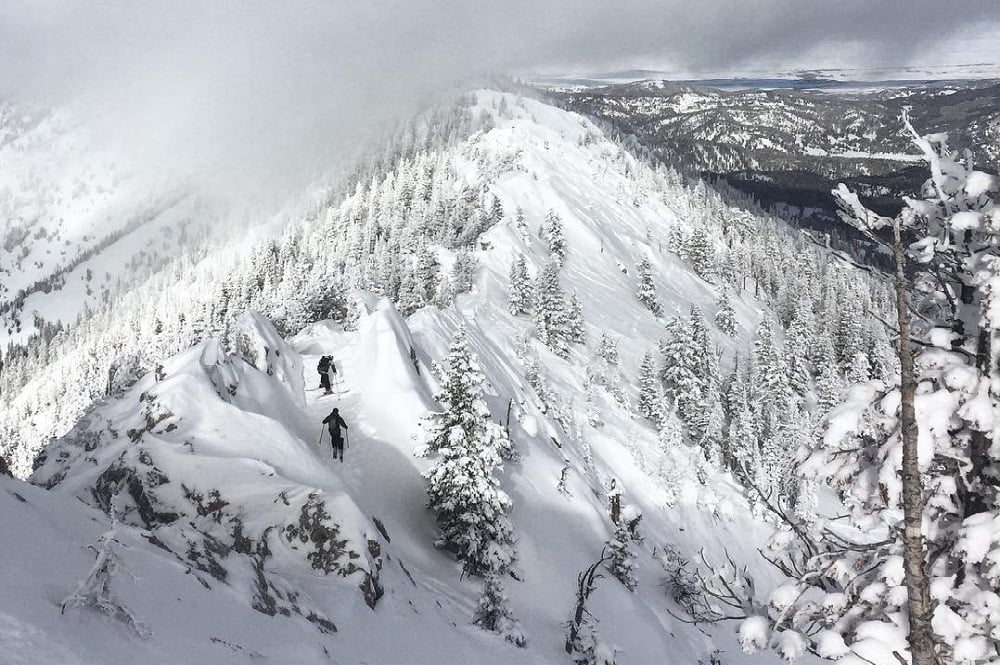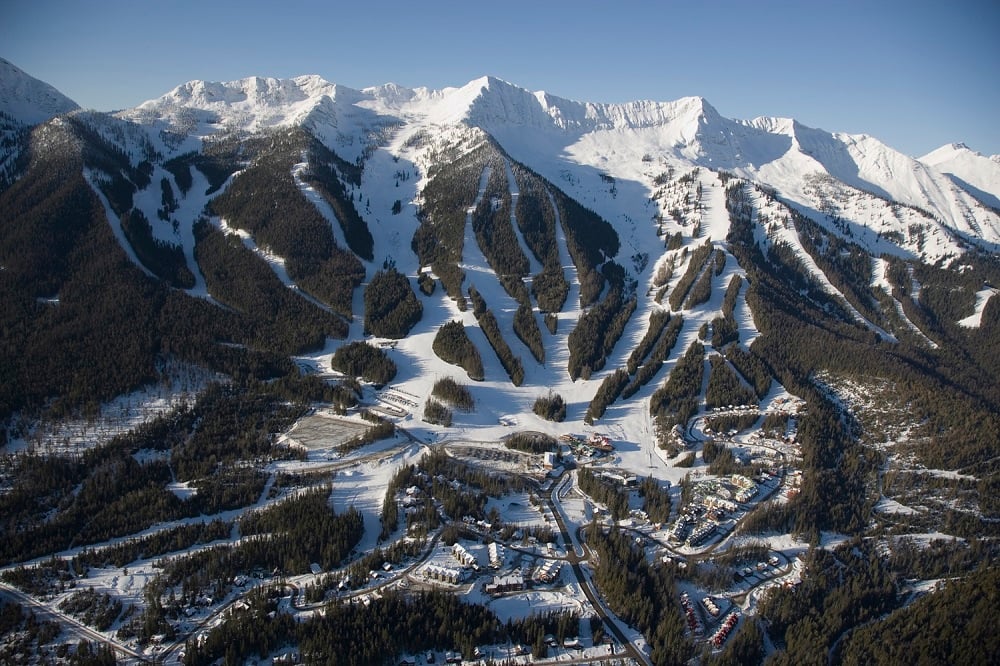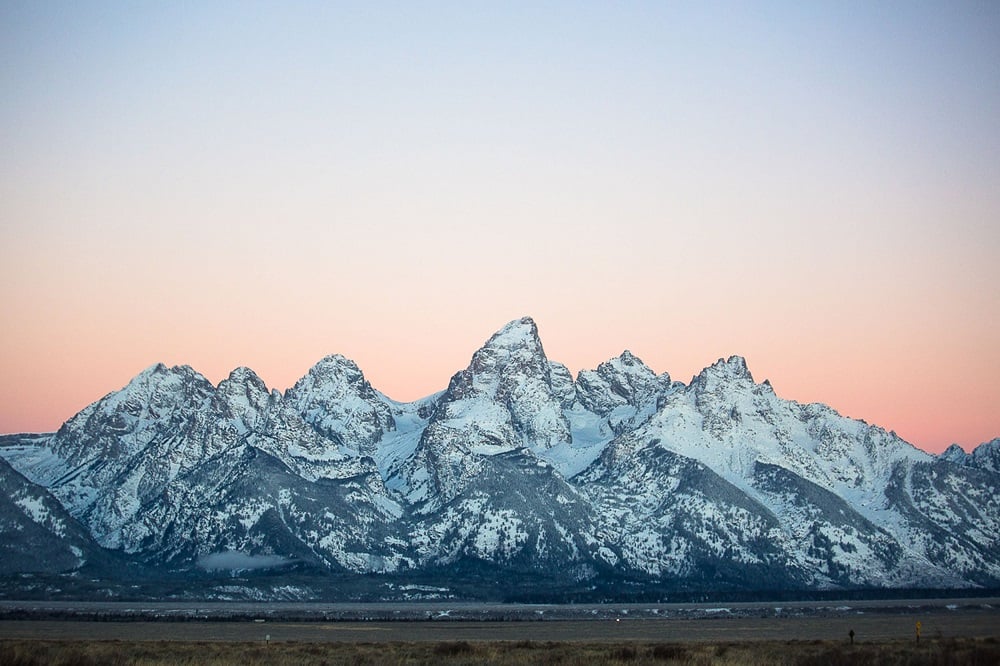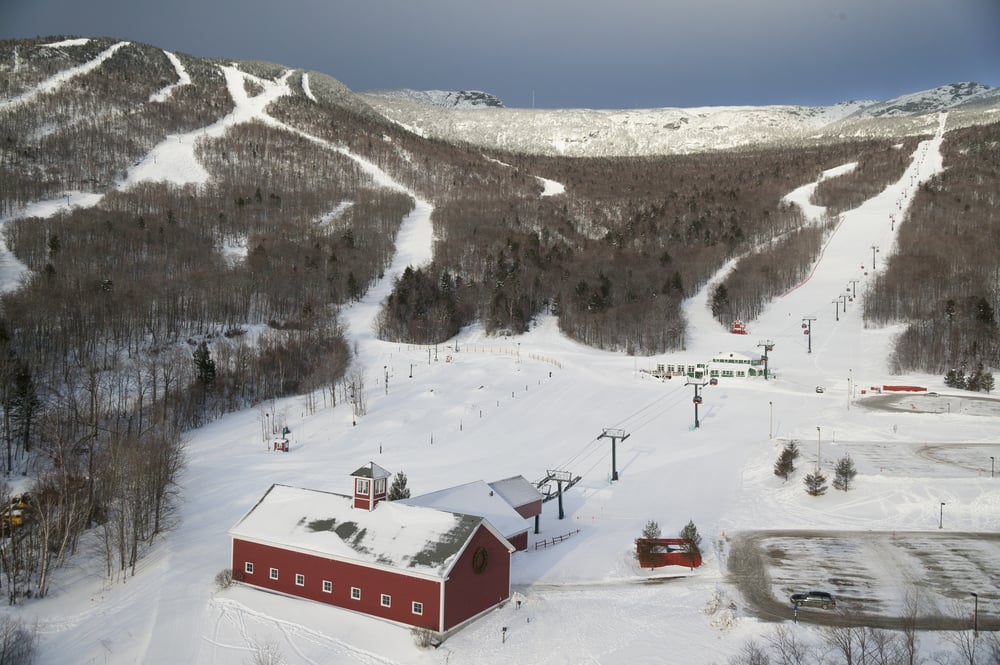You’ve probably seen it in the ski and snowboard movies, deep powder, endless sushi, and zero crowds, but for many riders, skiing and snowboarding in Japan is still a head-scratcher. You might be wondering, is there even skiing and snowboarding in Japan? Where is the best skiing and snowboarding in Japan? How do I plan my ski or snowboard trip to Japan? Where is the best powder skiing and snowboarding in Japan? Read on and we’ll fill you in on the goods.
Once relatively unknown, powderhounds worldwide have discovered the bottomless powder (hence, the term ‘Japow’), delicious food, and charming culture that skiing and snowboarding in Japan has to offer. Surprisingly, the archipelago nation even has the highest number of ski and snowboard resorts of any country in the world. Plus world-class snowfall to match. If you want to ski powder, Japan is the place to be.
That said, planning a trip to ski or snowboard in Japan may seem like a daunting task, navigating foreign airports, traveling with ski gear, and the hectic network of trains, however, with a little research and some insider tips, visitors can ski and snowboard Japan like the pros. For those who don’t want to deal with all of the logistics, or those who want to travel with a group, evoTrip Adventure Travel offers several Japan skiing and snowboarding trips.
Once relatively unknown, powderhounds worldwide have discovered the bottomless powder (hence, the term ‘Japow’), delicious food, and charming culture that skiing and snowboarding in Japan has to offer. Surprisingly, the archipelago nation even has the highest number of ski and snowboard resorts of any country in the world. Plus world-class snowfall to match. If you want to ski powder, Japan is the place to be.
That said, planning a trip to ski or snowboard in Japan may seem like a daunting task, navigating foreign airports, traveling with ski gear, and the hectic network of trains, however, with a little research and some insider tips, visitors can ski and snowboard Japan like the pros. For those who don’t want to deal with all of the logistics, or those who want to travel with a group, evoTrip Adventure Travel offers several Japan skiing and snowboarding trips.
The Geography
Japan is a country made up of 6,852 individual islands, but skiers and snowboards really only need to pay attention to two of them: Honshu and Hokkaido.Honshu is Japan’s largest island, home to many of its most populous cities, including Tokyo. Honshu is also home to Nagano, host of the 1998 Winter Olympics, as well as evoTrip destinations Hakuba, Myoko and Nozawa Onsen. Skiers and snowboarders can ride the train or buses from Tokyo to these resorts. In general, the mountains on Honshu are larger and steeper than those in Hokkaido.
Hokkaido, Japan’s northern island, is known for its deep powder and legendary tree skiing. Sapporo is the largest city on Hokkaido, and the 5th largest in Japan. Skiers and snowboarders visiting Hokkaido will need to drive, take a train, or fly to the island from Tokyo to Sapporo, as there are no direct flights. Once in Sapporo, however, there are great options for skiers and snowboarders ranging from families to backcountry powder hounds. The ski and snowboard areas on Hokkaido are primarily located about two hours west of Sapporo, near Niseko, or about two hours east of Sapporo (such as Furano) close to the city of Asahikawa. Both are great home-bases for skiers and snowboarders. Or for those more inclined to the city life, there is plenty of skiing and snowboarding accessible from Sapporo itself.
On both islands, there are great cities to set up a basecamp, or endless ways to connect areas and make for an epic road trip. While it may be enticing to try and test out the skiing and snowboarding across both islands, we recommend sticking to one of the two unless your trip is longer than two weeks. Japan is similar in size to California, and despite the great availability of transit options, travel can quickly bite into your time on the mountains riding powder.
Explore Japan evoTrips
Our trips offer an unmatched blend of sport, culture, and human connection - all while leaving you free from having to tackle the logistics.
Join us for the trip of a lifetime!
Ski & Snowboard Areas on Honshu, Japan
Hakuba
Hakuba is not just one ski and snowboard resort, but a region of its own. This valley has a bounty of great terrain, big mountains, and is one of the best destinations for a ski and snowboard trip to Japan. Happo-One and Cortina are two of the more well known areas in Hakuba, and are also some of the best ski and snowboard areas in Japan. Backcountry skiers will enjoy the plentiful terrain out of bounds at the ski areas, however, there are also lots of hazards and terrain traps, so we strongly recommend hiring a guide. Overall, Hakuba has a lot to offer visiting skiers and snowboarders, which makes it one of the best places to ski and snowboard in Japan.Myoko
Myoko is another great option for skiers and snowboarders looking to ride on Honshu. Hakuba may be a little bit larger, more western, and family friendly, but Myoko has its own perks like amazing tree skiing and snowboarding. The layout across multiple resorts is also fairly similar to Hakuba, although less crowded! For a great mix of skiing or snowboarding and Japanese culture, Myoko is a sure bet.Nozawa
Nozawa Onsen is a nice little village alongside a fairly large (by Japanese Standards) ski and snowboard area. It is located in Nagano, about a two hour drive from Hakuba. The village has a long and rich history, making it a great place to experience Japanese culture. The Fire Festival (held on January 15th every year) is a highlight, and definitely worth planning a trip around.
Our Favorite Skis for Japan
Ski & Snowboard Areas on Hokkaido, Japan
Niseko
Niseko is one of Japan’s most popular ski and snowboard destinations. The area is actually four separate ski and snowboard resorts built around the same peak. The four separate areas are Grand Hirafu, Annupuri, Hanazono, and Niseko Village. They can all be accessed from town via bus. The skiing and snowboarding in Niseko is the most similar to North American ski towns and resorts. There is still a good balance of distinct Japanese culture for those who seek it out, however. The town of Niseko is very lively and has the best nightlife of Japan’s ski and snowboard resorts. Niseko has grown popular because of the great access, reliably deep powder, and fun tree riding.Rusutsu
A close neighbor to Niseko, Rusutsu has access to some great terrain, and tends to be a bit less crowded. The base area is an amusement park (literally), with rollercoasters and other rides that run in the summer months. In the winter, the resort is a little more quiet. There is some fun backcountry access from Rusutsu, but skiers and snowboarders must remain wary of backcountry hazards. A guide is highly recommended if you plan to go out of bounds. The resort itself is one of the best ski and snowboard areas in Japan.Kiroro
Kiroro is one of the closer ski and snowboard areas to Sapporo and routinely receives tons of snow. The backcountry access at Kiroro is very good. Inbounds, the ski patrol is fairly restrictive of off-piste access. Kiroro’s best terrain sits in an area just outside the ski area boundary. Ski patrol controls access to this terrain, requiring skiers and snowboarders to check in and check out, a task that is totally worth the reward. There is a guide service in the main lodge that can help show you around this sidecountry area safely. Kiroro does not have much of a base area town or village, although there are a couple hotels.Asahidake
The highest peak in Hokkaido, Asahidake, is home to one of the island’s most unique ski and snowboard areas. There is only one lift, a large tram that goes about two thirds of the way up the peak. From the top of the tram, there are a couple on-piste runs, and nearly endless backcountry options. The high elevation means great access to terrain, and great views, but it also means low visibility in stormy weather. It can be very tough to route-find and ride at Asahidake when it’s stormy. There are a couple great lodges right at the base, though the area is a bit off of the beaten path.Sapporo Tiene
A short bus ride away from the Sapporo train station, Sapporo Tiene (aka just Tiene) is one of the closest ski and snowboard areas to Sapporo. The mountain is relatively small, but has some great off piste terrain, and nice backcountry access. This proximity to the city makes daytrips easy. Riding Tiene is a great way to add some more riding on the way to or from Hokkaido. From the Sapporo Train Station, you can catch a train to Teine Station, then grab a bus to Teine Highland ski area, the trip takes about 30-60 minutes total.Sapporo Kokusai
Similar to Tiene, Sapporo Kokusai can be easily accessed from Sapporo via bus or car. The story remains much the same, with fun tree skiing and snowboarding to be explored off the groomed pistes. There are buses from the Sapporo Train Station.Furano
Furano is a great little town, with a very fun ski area. The city itself is big enough to serve as an interesting basecamp for a longer trip. Asahidake, as well as several smaller ski and snowboard areas are nearby. Asahikawa being a bit larger of a city can also serve as a great basecamp. These ski and snowboard areas are less crowded on average than those in the Niseko area.Kurodake
Kurodake can be an amazing area to ski, however, it is frequently shut down in bad weather and high winds. Similar to Asahidake, there is only one tram or “ropeway” as it’s translated. While we wouldn’t recommend this as a primary destination, it is a cool area to check out on a Hokkaido skiing and snowboarding road trip if the weather permits.Check Out Our In-Depth Guides to Top Japan Destinations:
Backcountry Skiing & Snowboarding in Japan
Outside of the resort boundaries there lies some of Japan’s best skiing and snowboarding. Fun lines can be found right off of the roadside, or deep in the mountains. Skiing in the backcountry anywhere is dangerous, especially if you don’t have the complete knowledge of the season’s snowpack. There are many guiding services available throughout the country. A lot of the guides are Australian or from New Zealand, meaning they speak good english. While the snowpack usually is relatively stable, avalanches do happen in Japan. Inbounds or out, it is important to use good deep snow skiing and snowboarding practices. Be sure to have the proper avalanche gear, know how to use it, and always ski with a buddy.
Our Favorite Snowboards for Japan
The Snow & Weather in Japan
Frigid air moves east off of mainland Asia and Russia, picks up moisture from the Sea of Japan, and dumps huge amounts of snow on the Japanese mountains. Niseko sees over 500” or nearly 46’ of snow in an average winter. What makes the skiing and snowboarding in Japan so good isn’t just this massive quantity of snow, it’s the quality. Due to the cold Siberian air, Japan’s powder is typically light and fluffy, the truly blower kind of stuff we all dream about. Nearly constant snowfall means the sun does not come out very often, limiting access to the higher peaks until later in the spring.When to go Skiing and Snowboarding in Japan
All of this sounds great, doesn’t it? But you may still be wondering when is the best time to ski in Japan? The winter season in Japan is similar to that of North America, running from late November to late April. Japan receives its most consistent snowfall from the middle of January through the middle of February, this is the best time to ski in Japan. Book your Japan trip during this time and it’s likely that you’ll get at least one or two big dumps. Visiting later in the winter means a higher chance for sunshine and clear days, but also warmer temperatures and heavier snow.Getting Around Japan
Japan has many great transportation options for visiting powderhounds. These options range from busses and trains, to rental vans. Many skiers and snowboarders will not need a car while visiting Japan because of the wide availability of buses and trains. Skiers and snowboarders heading to the Nagano area can even take the Shinkansen, or bullet train. Those riders looking for more flexibility or wanting to explore the backcountry may want to consider renting a car or van. Driving in Japan is not recommended for anyone not comfortable driving on snow packed rural roads, or not comfortable driving on the wrong (left) side of the road, however. In order to drive in Japan, visitors must obtain an International Drivers Permit before arriving in the country. This can be done at several locations in the US, including AAA travel offices.
Our Favorite Bags For Japan
Japan Travel Tips
Internet/WiFi Access
Regardless of which methods you use to get around Japan, having access to the internet is a huge help for translating and route planning. In the Tokyo airport there are several kiosks that rent enabled SIM cards, or portable WiFi hotspots. These are a small costs and a very worthwhile investment, plus you can keep your Instagram page stocked with banger shots that will make all of your friends back home way jealous. #Japow #socialmediaskier #evoexploresTa-Q-Bin
There are a couple of ways to make getting around Japan easier, too. Takkyubin (Ta-Q-Bin), or the Black Cat delivery service can deliver your luggage (ski bags & snowboard bags included) to your final destination. This service lets you drop off your ski and snowboard bags at the airport, to be delivered to your lodging almost anywhere. This is great especially if you want to spend a couple days in the Tokyo or other cities without the burden of lugging big ski and snowboard bags around. There are also plenty of baggage storage services at the airports.Hyperdia App
For skiers and snowboarders using Japan’s awesome train system, Hyperdia is an essential app. While the trains are great, figuring out routes, fares, and schedules can be a bit tricky at first. Portable WiFi and Hyperdia are a lifesaver in that department, helping to decipher the logistics.Google Translate App
Downloading the Google Translate app can be a lifesaver, helping to read menus or deciphering the instructions on the kerosene heaters in your frigid AirBnb. The app has two awesome features. First, you can take a picture of Japanese text, like the instructions to the heater, and it will translate to English. The second great functionality is translating and actually “speaking” in Japanese for you. For example, you can type in your question or response in English and have the app read it, in Japanese, to whoever you’re speaking to. In larger and more populous areas like Niseko and Hakuba more people will speak English. Many of the ski and snowboard areas are in pretty rural parts of the country, however, where there is very little English spoken.The Culture
The skiing and snowboarding in Japan are an obvious attraction, but the culture is what makes the country an all-time bucket list destination. After riding deep powder all day, slurping down a bowl of ramen, then hitting the onsen for a soak, you’ll never want to go back to “real life” ever again.The Onsen
Picture yourself skiing or snowboarding the deepest powder of your life, sounds pretty good, right? Onsen are one of the few things that can make those days even better. The traditional Japanese hot spring baths are the perfect end to any ski day, and they are also everywhere in the mountains of Japan. All onsen will be slightly different and fall somewhere on a spectrum from communal bathhouse to outdoor hot tub-like pools. Almost all onsen have separate rooms and pools by gender. Onsen are nude baths. If this is uncomfortable, you can use a small “modesty towel” when not in the pools. In general Japanese culture highly values respect, so it’s important to know some general and basic rules of these onsens. While this may seem daunting at first, and a bit uncomfortable, you’ll quickly learn to look forward to a daily afternoon soak.Here are some basic rules for onsen etiquette
- Always Be Respectful: Onsen are not like the hot tub at your hotel in Whistler, these baths are for relaxation, and even healing, not partying. Don’t bring alcohol into the onsen, save the Sapporo or Asahi beers for after your bath, there may even be vending machines outside the baths!
- Always Wash Yourself Before Entering: There will be showers at the onsen, often with a small stool. Sit down and wash yourself prior to entering (these are the best showers around if you’re staying in an RV!).
- You Can Rent a Towel or Bring Your Own: Most onsen have towel rentals available, but you can bring your own if you want to save a couple hundred Yen.
The Food
The Food: Without a doubt, one of the best parts of visiting Japan is the food. From huge bowls of ramen, to sushi, the food is delicious, and generally carries a modest price tag. Some highlights are definitely the convenience stores, which have fun and interesting snacks that are great to keep you going on the mountain. Onigiri, or riceballs are a favorite of skiers and snowboarders. These individually packed rice-triangles come filled with any number of fish, meats, or vegetables. Deciphering the picture on the label can be tricky, so go in with an open mind. The candies are fun to explore, and there are plenty of other wacky treats for the more adventurous eaters.Ramen and all of its local variations is one of the best foods to fill up on after a long day of skiing. Eat as much as you can, because you’re going to miss it, we guarantee it.
Fish lovers will be overwhelmed by the bounty in Japan, with both sushi and non-sushi options. We recommend checking out at least one kaiten or conveyor belt sushi restaurant. Here, delicious and exotic rolls circle continuously on a conveyor belt past your table. Grab what you want and pay by the plate.
Need ski or snowboard gear for your trip? Gear up! Shop online, or stop by one of our amazing flagship stores in Seattle, Portland, or Denver and get stocked up on everything you need for an all-time day on the slopes.
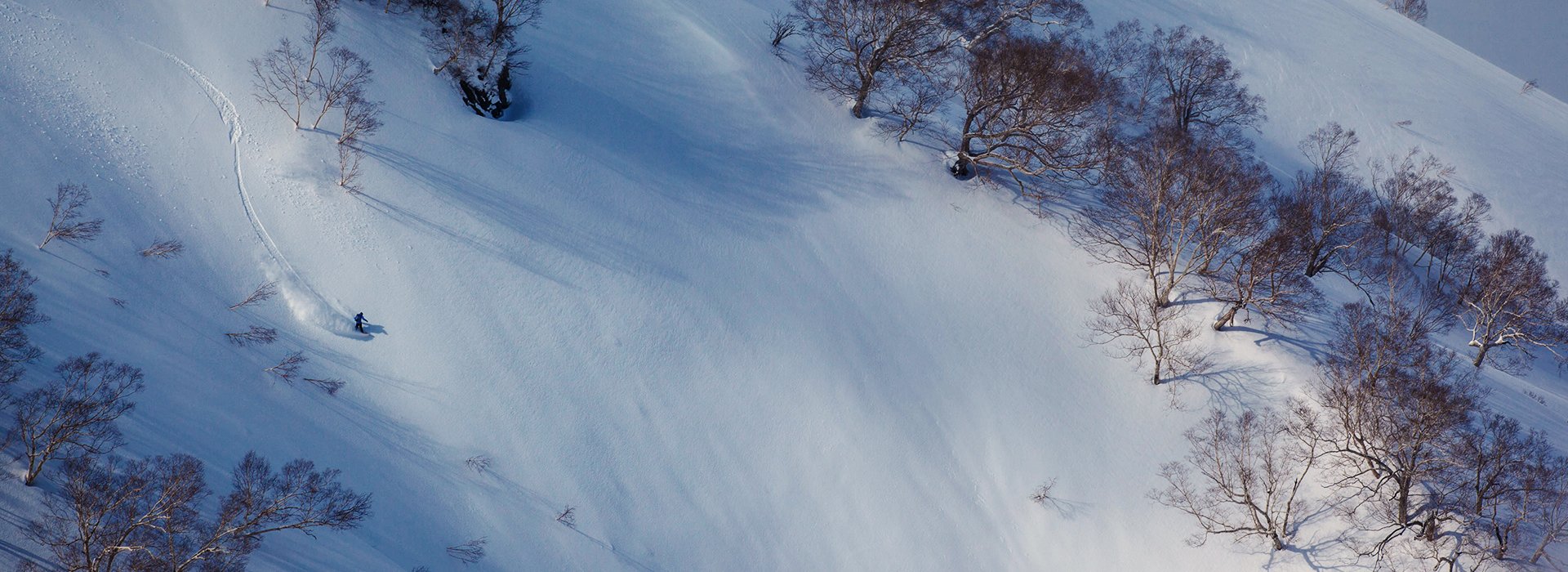
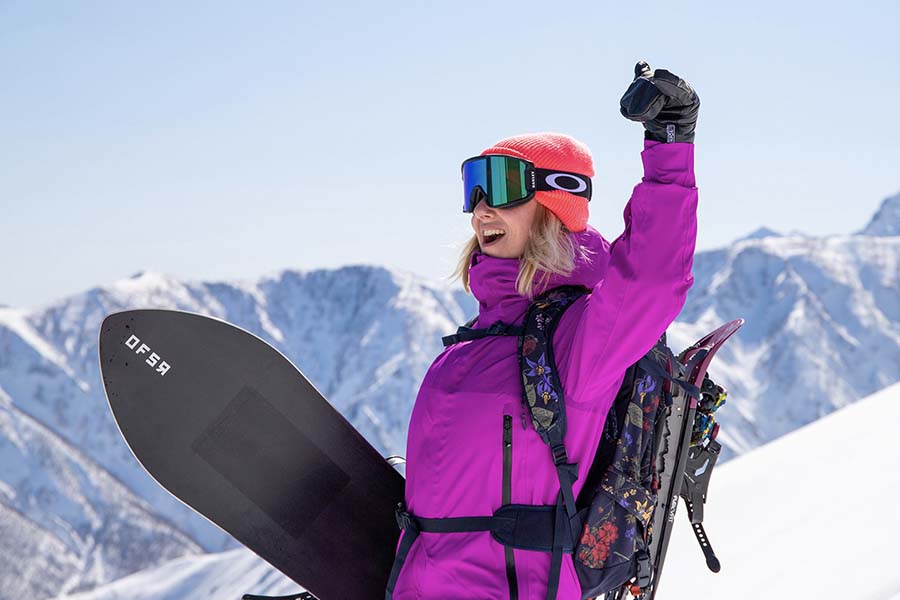
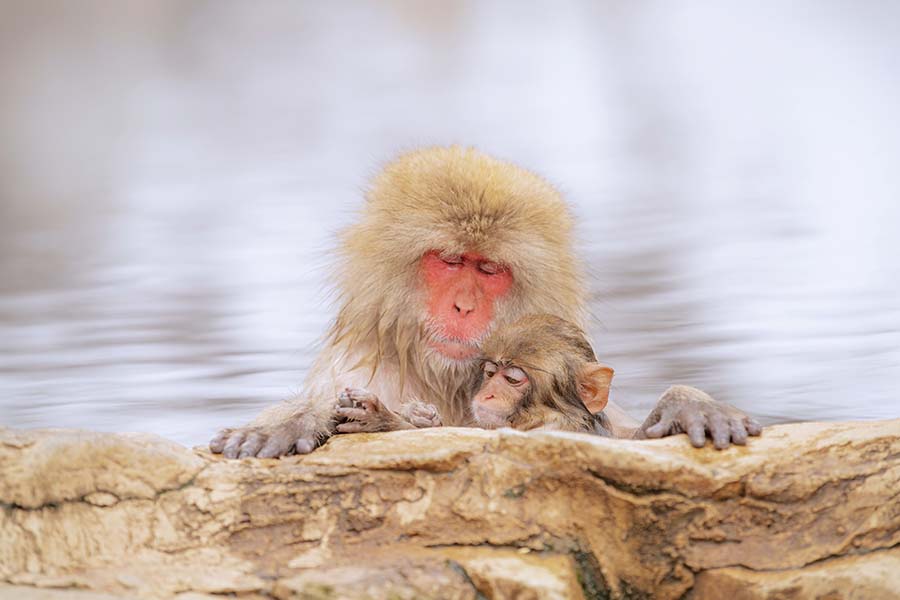



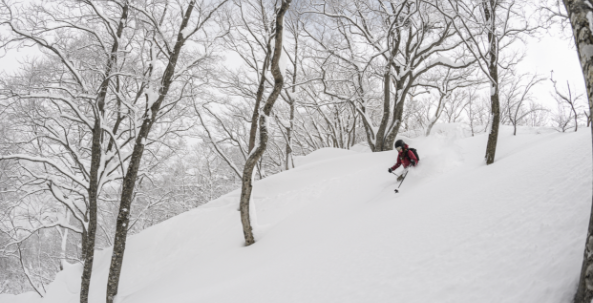

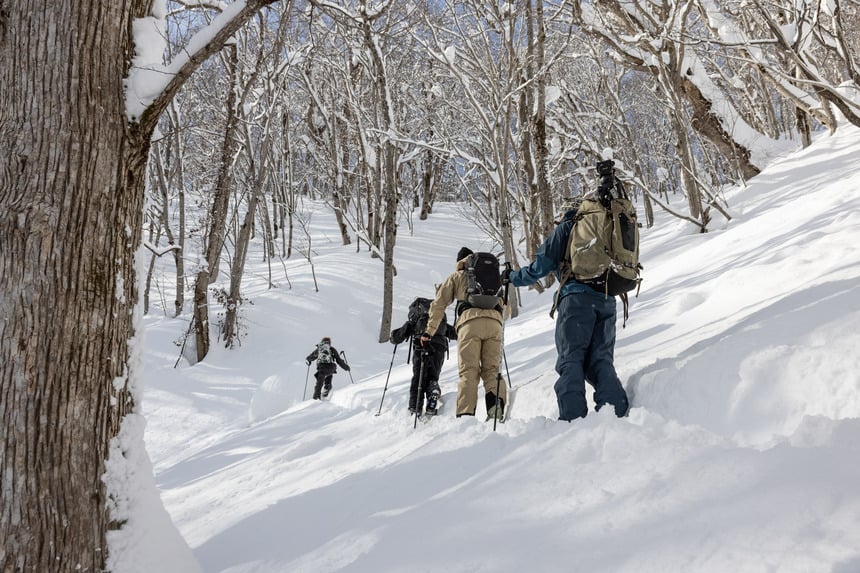


.jpg)
.jpg)











